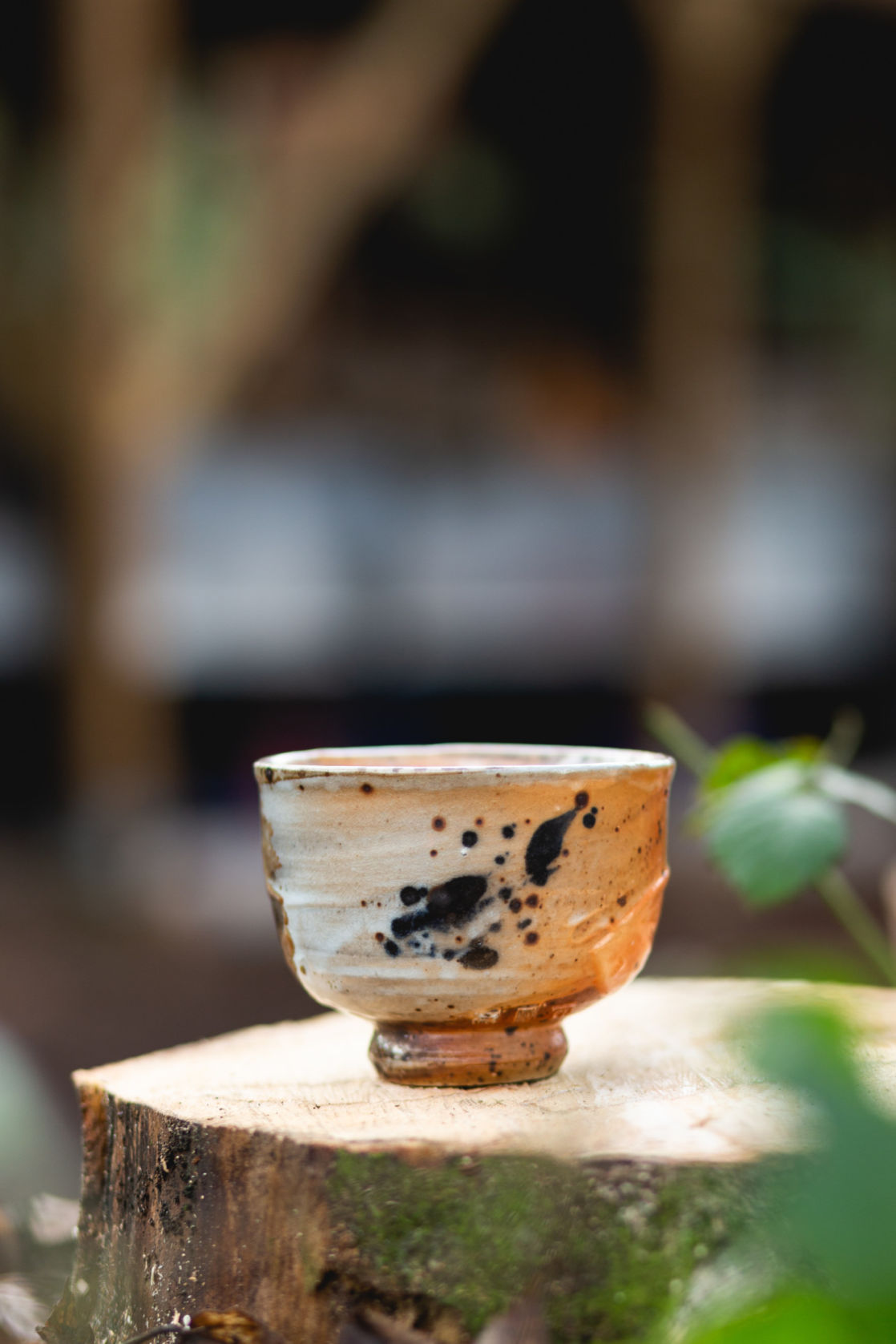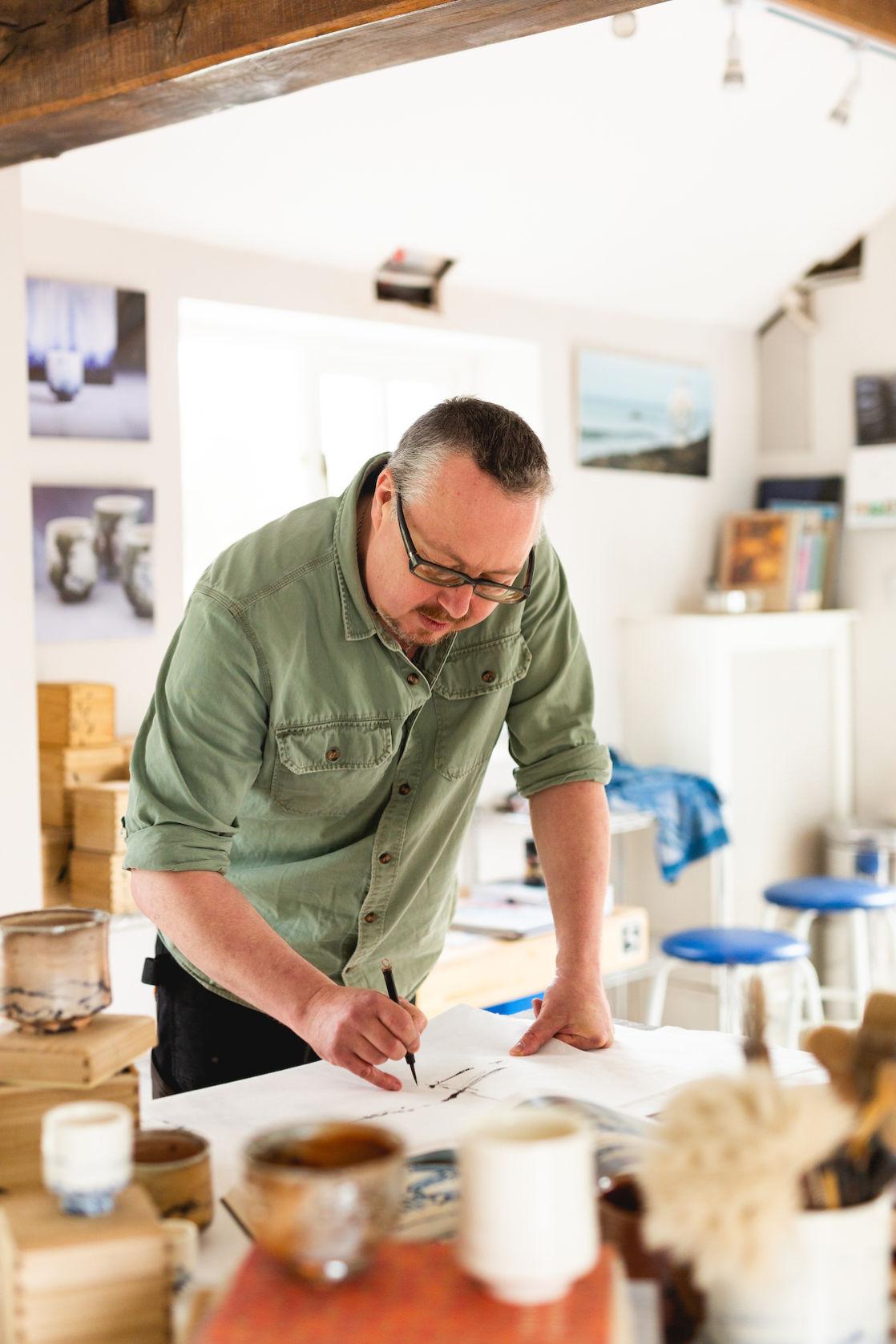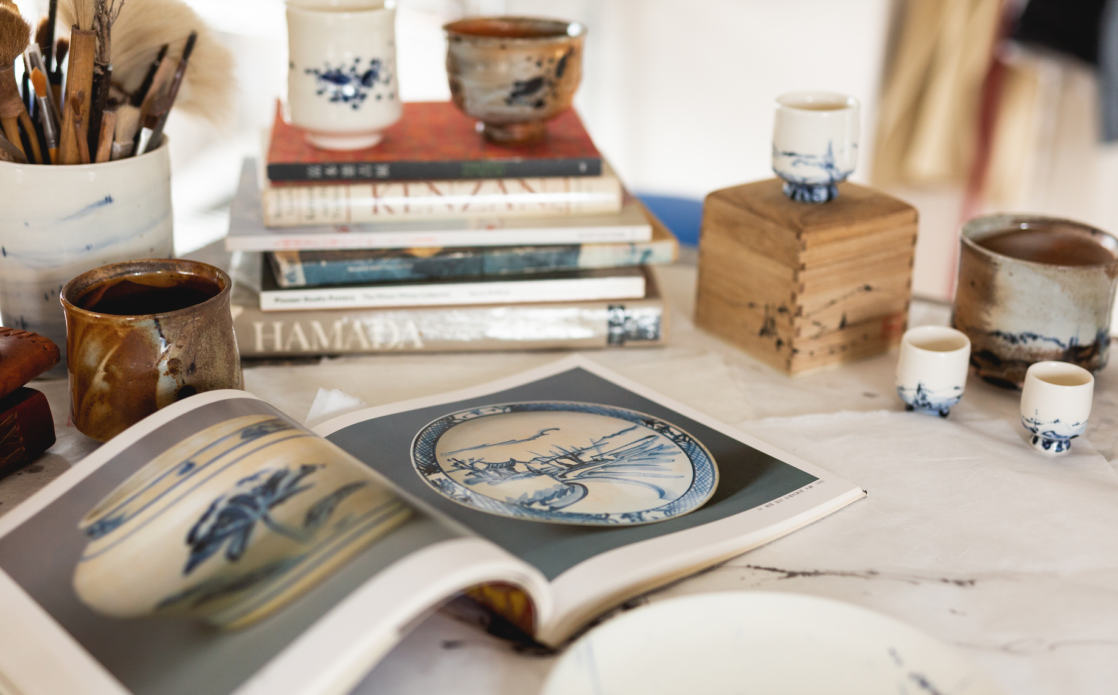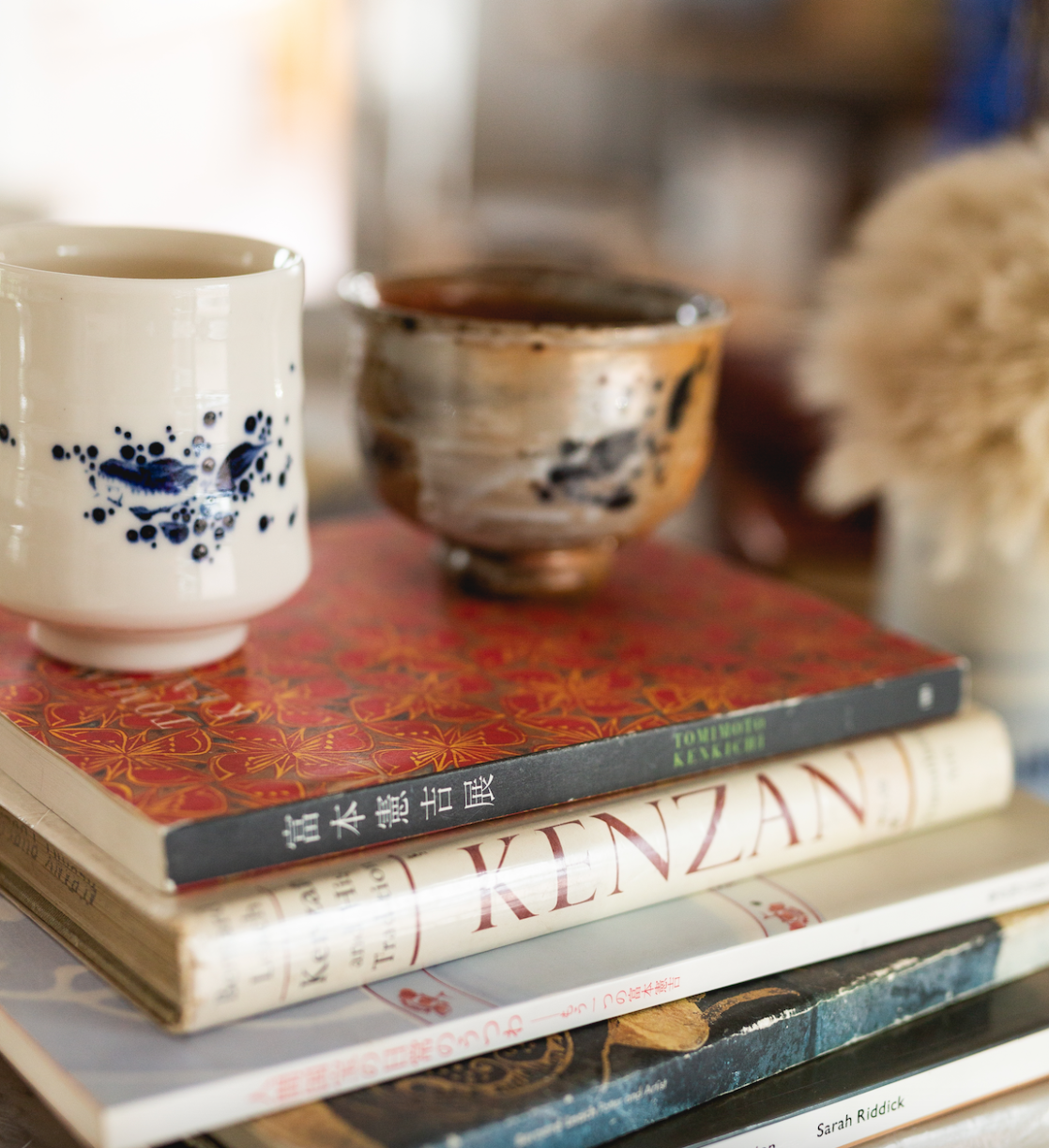Welcome to Ceramic Review
Ceramic Review is the magazine for contemporary and historical ceramics, ceramic art and pottery.
Ceramic Review Issue 334
July/August 2025
Ceramic Review is the magazine for contemporary and historical ceramics, ceramic art and pottery.
July/August 2025
Ceramic artist Richard St John Heeley draws on Eastern traditions to create his blue and white porcelain pieces. Here he discusses how pots by Bernard Leach and Tomimoto Kenkichi influenced his practice

Work by Richard Heeley | photograph by Mark Williamson
Aren’t public museums and galleries magical? For free we can access objects of utter delight – art and antiques from all over the world, different centuries and cultures. They are an exhilarating time machine of inspiration. Armed with a pencil and sketchbook, I am a child in these places. To wander a bastion of art and design such as the V&A Museum is a journey of discovery and you can emerge as a different person.
I graduated in Three-dimensional Design in 1996, specialising in Ceramics. I was interested in Chinese ceramics at this time and enjoyed exploring the forms of the Song Dynasty. I was lucky to be taught by the wonderful potter and teacher Alex McErlain and in our first year he set us a classic project: we were to go to Manchester City Art Gallery and draw a piece of work that inspired us. I was attracted to a Leaping Salmon vase made by Bernard Leach. It showed a jumping salmon, body arched, its curve matching the oval shoulder of the vase. It had bands of iron oxide framing the design and at significant points of the form, dividing the neck, belly and foot. The brushwork was iron on an ash glaze and the position and design of the decoration had been considered to comfortably fit the form. I found the fish and marks to be bold, fluid and confident – an important attribute when applying this sort of decoration to a piece that is softly thrown. Overall it is a very quiet piece, one that could be easily dismissed as a heavy brown pot, but it is a masterclass in how to compose and apply decoration. It was an excellent example to learn from and admire and one that deserves respect.
Ancient in art and design, the fish motif is timeless and loaded with symbolism. It was the first image I learnt how to produce and I would practise drawing them, but back then when I was starting out on my ceramic career, any satisfactory result was beyond my ability. It has taken me about ten years to produce an image that I feel is adequate – one that is smoothly created by efficient, confident brush strokes. To this day I do not tire of drawing fish motifs, to produce a good one is still a thrill to achieve.
Leach’s Leaping Salmon vase is considered a masterpiece. There are not many of them and the best example is in the Milner-White collection at York Art Gallery, part of an important set of British Studio Pottery gifted by Eric Milner-White (1884-1963), who was Dean of York Minster. The vase was also included in a major Craft Council exhibition in 1998. It is glazed in a bracken ash glaze, which Tomimoto Kenkichi was credited with translating from an original 17th/18th-century document. This was the first time I had found a reference to Tomimoto Kenkichi and little did I realise how important he would be to me.
After graduating, my future wife and I moved to London. I managed to get a job as a ceramics technician and this eventually evolved into teaching. It took us some time but in 2009 we eventually managed to buy a house with a big enough garden for me to set up my studio. I bought the biggest electric kiln I could afford, with the intention of building a gas kiln later. Although my previous work had been reduction stoneware, I wanted to get making as soon as possible and porcelain seemed a good choice to get the best results from an electric kiln. We had travelled around China the year before we moved and I had collected a substantial number of brushes, which I hung proudly in the studio and began exploring brush painting.
I remember coming across a reference to Kenkichi again while preparing for a talk on Leach and Hamada for my evening class students. I soon realised I did not know enough about him and began researching his life and work for my talk. I find the relationship between Leach and Kenkichi very inspiring and still enjoy reading their letters and exchanges. They are comforting to refer back to, almost like talking to friends – just as one of the pleasures of attending ceramic shows is that they enable me to discuss pottery with friends and peers.
In my search for more information about Kenkichi, I sent off for a catalogue of an exhibition at the National Museum of Modern Art, Tokyo, in 1991. When it eventually arrived from Japan, I was very excited; the introductory essay was a delight to read and for me to see a full retrospective of Kenkichi’s work was quite wonderful.

Richard Heeley | photograph by Mark Williamson

Tomimoto Kenkichi, Landscape of Ando Village porcelain plate, pictured in the catalogue of an exhbition at the National Museum of Modern Art, Tokyo, 1991
One piece caused a monumental shift in me – a porcelain plate with cobalt decoration depicting his hometown titled Landscape of Ando Village. This was the first time I had encountered the famous phrase: ‘Don’t make patterns out of patterns’, born from his correspondence with Leach. His designs, based on his sketches of the natural world and his immediate local surroundings, show his ability to see beauty in the commonplace. The titles explain it better than I can: ‘A lane by a cottage’, ‘A village crossing’, ‘Bamboo thickets under the moon’.
I immediately planned a visit to the V&A Musuem as I remembered it had a plate with the Ando village design. I have had a reverence bordering on the religious for the V&A since I was 16. My pottery tutor Geoffrey Kenward took me there when I was studying A-level pottery, it was a trip I have never forgotten and I have returned often ever since. In 2010, it was a huge honour for me to demonstrate throwing and decorating with London Potters on the opening night of the refurbished Ceramics Galleries.
I needed to see that plate again – to properly see it with intent. I would like to say that I ran all the way that day, but I don’t remember the journey. However, I do recall coming face to face with the plate and it was at this point in time that my landscape painting and ceramic practice collided. I became aware of the need to achieve a sense of place in the natural world.
This set me on a new path, reinforced by my regular pilgrimages to North Wales to draw and paint. I was now determined to find the environment I needed in order to make work inspired by my surroundings. We had to move. It has been some time coming, but three years ago we left London to establish Hempmill Pottery & Cookery School in beautiful countryside on the Staffordshire/Shropshire border. Our nearest museum, the Hanley Museum in Stoke-on-Trent may not be quite as large or grand as the V&A, but it is still full of fabulous artefacts and inspirational pots – aren’t museums wonderful?
For more details visit richardheeley.com; hempmillpotterycookeryschool.co.uk
Want to enjoy more articles filled with the very best ceramic content? Subscribe today!

Work by Richard Heeley | photograph by Mark Williamson